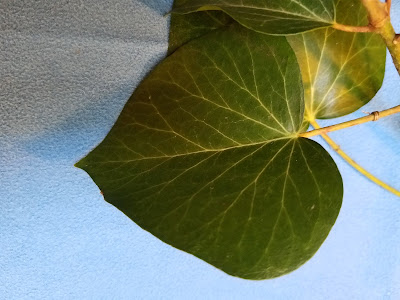These are plants not common along Rolandvue but brought in to be analyzed from nearby areas. They are probably here in low numbers. There is a survey going on of Lake Roland plants taken along pre-planned transects. I have skipped the grasses and sedges for the time being, since details are microscopic.
Tiarella cordifolia or foam flower is now more a garden plant but escapes here and there. It is considered native to the east coast. It will be more obvious when flowering in May. The photos show the plant in flower and a close up of the leaf. A number of birds and insects make use of foam flower but it is not mentioned in the usual foraging texts. It is a low plant, more of a ground cover, with variable markings on the leaves.
  |
| foam flowers, from Natural history society, to watch for in May,seen locally but not yet in neighborhood |
The black cohosh or common black snakeroot will flower in June to early July. The white spike of flowers may be six feet tall. It is a source of patent medicines including Lydia Pinkham's compound. The photos show the basal leaves with five leaflets and the tall fairy candles. The burr like fruit can stick to fur or clothes.
 |
| black cohash blossom turning to seed. Locally seen not in neighborhood |
Bidens frondosa was seen last month, similar to the bidens along Wagner shown earlier this year. The photos show the leaf pattern and a close-up of the beggar tick, the adherent fruit which gives the common name.
 |
| Biden like the one along Wagner last month, different flower. |
 |
| Seeds have the double spike, which gives the name bidders |









